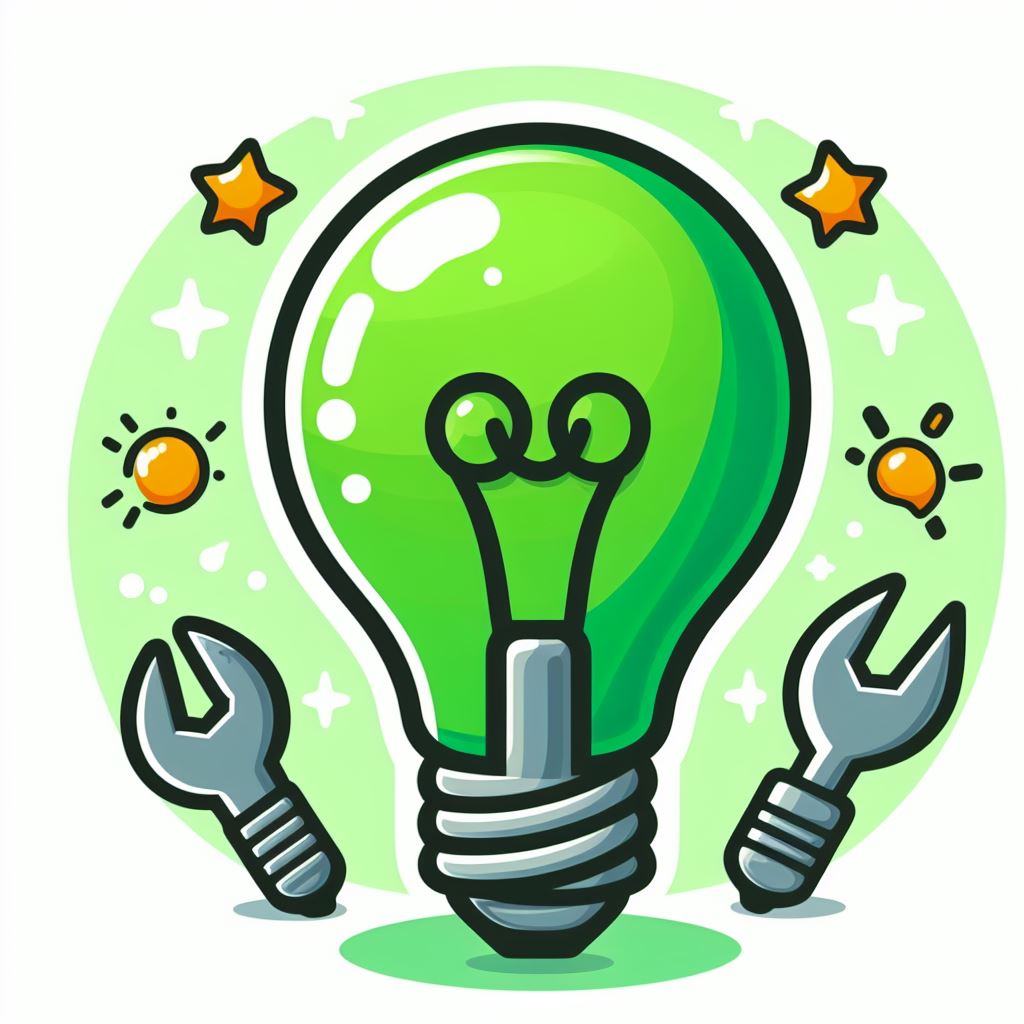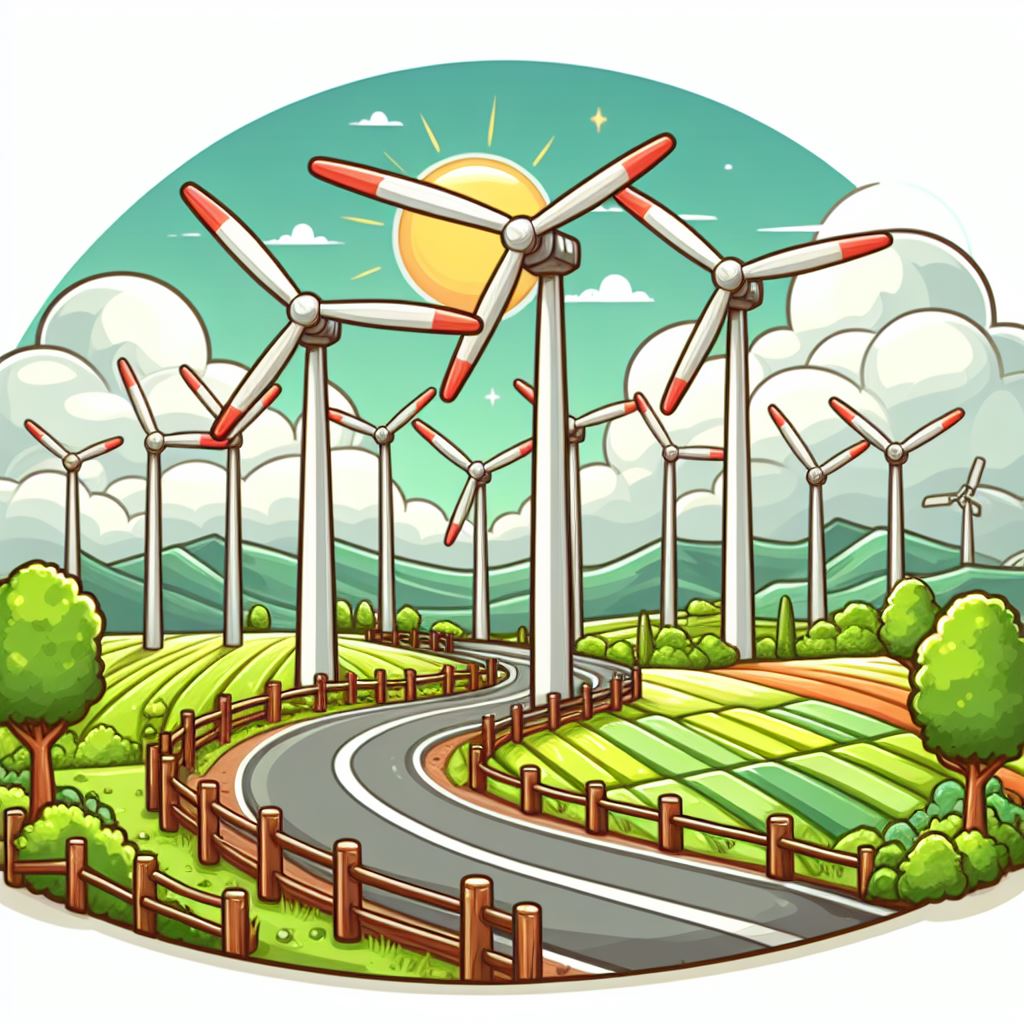Estimated reading time: 8 mins
In an era where climate change and environmental degradation pose significant challenges, the need for innovative solutions has never been greater. While we’ve made strides in sustainable technology, imagine a world where the following 20 future eco inventions are a reality. These are the game-changing ideas that could redefine our relationship with the planet.

1. Carbon Capture Trees
This is perhaps the star child of eco inventions. Envision artificial trees with the advanced ability to absorb carbon dioxide far more efficiently than their natural counterparts. These futuristic structures could be strategically placed in urban areas, industrial zones, and alongside highways, serving as a powerful tool in mitigating the greenhouse effect. By utilizing innovative materials and cutting-edge carbon capture technology, these trees would not only sequester CO2 but also potentially convert it into usable forms, significantly reducing atmospheric carbon levels and combating climate change effectively.
2. Self-Cleaning Solar Panels
Imagine solar panels equipped with a revolutionary self-cleaning mechanism, designed to maintain optimal energy efficiency. Over time, dust and debris accumulate on panels, hindering their ability to absorb sunlight. These advanced panels would use nano-coating or vibration-based technologies to repel dirt and water, ensuring they remain clean and highly functional without manual intervention. This innovation would be particularly beneficial in arid and dusty environments, maximizing solar energy capture and significantly boosting renewable energy production.
3. Water-from-Air Harvesters
This is one of those eco inventions that blows your mind! Picture advanced devices capable of extracting significant amounts of moisture from the air, providing a sustainable source of clean drinking water, especially in arid regions where water scarcity is a pressing issue. These harvesters would utilize innovative condensation techniques, possibly enhanced by nanotechnology or renewable energy sources, to efficiently collect atmospheric moisture. By transforming humidity into potable water, these devices could revolutionize water accessibility, offering a lifeline in drought-stricken and water-scarce areas around the globe.
4. Biodegradable Electronics
Envision a future where electronics are not only powerful but also eco-friendly. These biodegradable devices, from smartphones to laptops, would be crafted using sustainable materials like bioplastics, organic LED displays, and other non-toxic, biodegradable components. Once they reach the end of their life cycle, these gadgets could be disposed of without harming the environment, significantly reducing electronic waste. This advancement in eco inventions would represent a major leap in technology, aligning the ever-growing demand for new electronics with environmental consciousness.
5. Energy-Generating Roads
Imagine roads and highways embedded with technology that converts the kinetic energy produced by vehicles into electrical power. As cars and trucks travel over these surfaces, their movement would activate energy-harvesting mechanisms within the road, such as piezoelectric materials or pressure-driven generators. This eco invention could transform miles of roadways into a vast, renewable energy network, harnessing the power of everyday commutes to generate electricity, thereby turning traffic into a valuable resource for sustainable energy production.
6. Ocean Plastic Miners
These would be autonomous, solar-powered robots designed to navigate the oceans, targeting areas heavily littered with plastic waste. Equipped with advanced sensors and AI, they would identify, collect, and compact plastic debris, significantly reducing ocean pollution. Their design would allow for minimal disruption to marine life. By efficiently recycling the collected plastics, these machines would not only cleanse our oceans but also provide a valuable resource for sustainable materials, addressing a critical environmental challenge. One of my top 3 favorite eco inventions!
7. Personal Air Purifiers
Imagine compact, wearable devices that create a clean air bubble around the individual. These personal air purifiers would use advanced filtration and ionization technology to filter out pollutants, allergens, and pathogens directly from the surrounding air. Ideal for use in densely populated, polluted urban areas, these devices would offer a personalized solution to air quality issues, significantly improving the wearer’s respiratory health and overall well-being in environments where air quality is compromised.
8. Wildlife Corridor Bridges
These are specially designed overpasses or underpasses that allow wildlife to cross human-made barriers like highways and railways safely. Integrating natural vegetation, these bridges replicate the animals’ natural habitat, encouraging their use and minimizing the disruption to wildlife migration patterns. By preventing animal-vehicle collisions and promoting genetic diversity through unhindered animal movement, these structures play a crucial role in conservation efforts, helping to maintain healthy, biodiverse ecosystems in regions fragmented by human infrastructure.
9. Smart Windows
Envision windows equipped with cutting-edge technology that allows them to adjust their transparency and thermal properties in response to external conditions. These smart windows could darken to reduce glare and heat during bright, sunny days or become transparent to maximize natural light and warmth during colder periods. This dynamic light and temperature regulation could significantly reduce the reliance on heating and cooling systems, leading to substantial energy savings and a reduction in carbon emissions in buildings.
10. Algae Biofuel Farms
These farms would cultivate algae on a large scale for biofuel production, offering a sustainable and efficient alternative to fossil fuels. Algae, known for rapid growth and high per-acre yield, can be converted into various types of biofuels, including biodiesel and bioethanol. Algae farms could be integrated into existing infrastructure, such as wastewater treatment facilities, where algae can help treat water while absorbing carbon emissions, thus creating a closed-loop system that’s environmentally beneficial.
11. High-Efficiency Vertical Farms
These are advanced agricultural systems where crops are grown in stacked layers, typically in a controlled, indoor environment. Using significantly less land and water than traditional farming, these vertical farms would utilize hydroponic or aeroponic systems to efficiently deliver nutrients to plants. Equipped with LED lighting that mimics sunlight, they could operate year-round, providing fresh, local produce to urban areas. This method drastically reduces the carbon footprint associated with food transportation and agricultural runoff, while maximizing crop yields.


12. Eco-Friendly 3D Printers
Imagine 3D printers that operate using recycled materials or biodegradable filaments, revolutionizing the manufacturing sector with a sustainable edge. These printers could repurpose plastic waste, transforming it into new, useful products and significantly reducing the environmental impact of production. By using materials like recycled PET bottles or bioplastics derived from natural resources, eco-friendly 3D printers would pave the way for a circular economy where waste is minimized and products are created with environmental consciousness at their core.
13. Solar-Powered Desalination Plants
Another one of my top 3 favorite eco inventions, these facilities would harness solar energy to convert seawater into fresh, potable water. Utilizing advanced solar-powered desalination techniques like solar distillation or photovoltaic-powered reverse osmosis, these plants could provide a sustainable solution to water scarcity, especially in arid coastal regions. By relying on solar power, they would operate with a significantly lower carbon footprint compared to traditional desalination plants, making them an eco-friendly option for addressing the growing global need for clean drinking water.
14. Nano-Filter Water Purifiers
These advanced water purifiers would use nanotechnology to filter out contaminants, providing clean, safe drinking water from almost any source. Compact and efficient, these devices could remove bacteria, viruses, and pollutants at a molecular level, making them far more effective than traditional filtration methods. Ideal for both developed and developing countries, these purifiers could be a game-changer in disaster relief scenarios, outdoor activities, or in areas where water infrastructure is lacking or contaminated.
15. Electric Public Transport Drones
Imagine a network of autonomous, electrically powered drones providing efficient and eco-friendly public transport in urban areas. These drones would reduce traffic congestion on roads, lower urban air pollution, and provide a rapid transit option. Designed for short to medium-range travel, they could operate along predetermined routes, offering a high-speed alternative to traditional ground-based public transport systems. By harnessing electric power, they would significantly cut down on fossil fuel consumption and urban noise pollution, contributing to a cleaner, quieter city environment.
16. Smart Energy Storage Systems
These systems would represent a major advancement in eco inventions and storing renewable energy. Utilizing cutting-edge battery technology and intelligent software, they would efficiently store excess energy generated from renewable sources like solar and wind. This stored energy could then be released during peak demand times or when renewable sources are not generating power, like during nighttime or on windless days. By smoothing out the availability of renewable energy, these storage systems would facilitate a more reliable and consistent transition to a fully renewable energy grid, reducing reliance on fossil fuels.
17. Zero-Waste Packaging Solutions
Envision a future where all packaging is either completely reusable or biodegradable. These solutions would range from compostable materials derived from natural substances to innovative, reusable packaging designs that consumers return or repurpose. This shift would drastically reduce the amount of packaging waste entering landfills and oceans. By closing the loop in product packaging, these zero-waste solutions would play a critical role in moving towards a circular economy, where every product lifecycle is sustainable from start to finish.
18. Urban Green Spaces
These are innovative designs for integrating substantial green areas within urban landscapes. They could include rooftop gardens, vertical forests on buildings, and urban parks that provide natural cooling environments and improve air quality. These green spaces not only offer aesthetic and mental health benefits to city dwellers but also play a crucial role in supporting local biodiversity, managing rainwater, and reducing the urban heat island effect. By reimagining city planning to incorporate more natural elements, urban green spaces could significantly contribute to environmental sustainability and urban resilience.
19. Pervious Concrete
This material is designed to allow water to pass through, reducing runoff and helping to replenish groundwater supplies. Unlike traditional concrete, pervious concrete contains a network of interconnected voids that permit water to percolate into the underlying soil. This technology can be used in pavements, driveways, and other surfaces to mitigate flood risks, reduce the need for complex drainage systems, and combat urban heat island effects by maintaining natural hydrological cycles. It represents a shift towards more sustainable and environmentally conscious urban infrastructure.
20. Household Water Recycling Systems
These systems are designed to recycle greywater – water from sinks, showers, and laundry – for reuse in household applications such as toilet flushing and garden irrigation. By treating and reusing greywater, these systems could significantly reduce a household’s demand for fresh water, easing the strain on municipal water supplies. Equipped with advanced filtration and purification technology, these systems ensure the recycled water is safe and clean for reuse, making them an essential component of sustainable home design in a water-conscious future.
Let’s make these Eco Inventions!
These eco inventions, though futuristic, represent the kind of forward-thinking solutions we need to adopt to address environmental challenges. By embracing such innovations, we can work towards a more sustainable and eco-friendly future. The journey to a greener planet is paved with creativity, innovation, and the relentless pursuit of better solutions. The future is not just about what we will face; it’s about what we can create. Let’s envision a world where these 20 eco inventions are not just ideas, but realities shaping a sustainable tomorrow.
